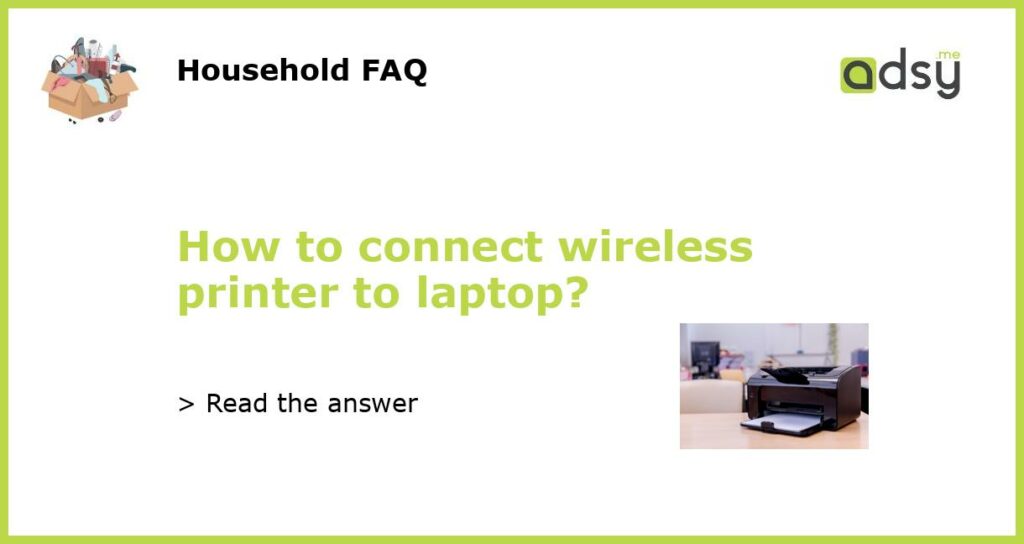Understanding the Basics of Wireless Printing
Before you can connect your wireless printer to your laptop, it is important to understand the basics of wireless printing. Wireless printing allows you to print documents and photos from your laptop without the need for a physical connection between the printer and your computer. This is done through a wireless network, which can be a Wi-Fi network or a Bluetooth connection.
With a wireless printer, you can enjoy the convenience and flexibility of printing from anywhere within your home or office, as long as you are connected to the same network as the printer. This means you can print documents from your laptop while sitting on the couch or from your bedroom.
Checking Compatibility and Requirements
Before attempting to connect your wireless printer to your laptop, it is essential to check the compatibility and requirements of both devices. Most modern laptops and wireless printers are designed to be compatible with each other, but it is still important to verify.
Check the operating system of your laptop to ensure it supports wireless printing. Windows, Mac, and Linux operating systems typically have built-in support for wireless printing, but it is always a good idea to double-check. Additionally, make sure your laptop has a wireless network card or is capable of connecting to a Wi-Fi network.
For the wireless printer, you need to verify that it has built-in Wi-Fi capabilities or supports Bluetooth printing. Some older printers may require an additional wireless adapter or dongle to enable wireless printing. Check the manufacturer’s specifications or user manual for this information.
Connecting Your Wireless Printer to Wi-Fi
If your wireless printer has built-in Wi-Fi capabilities, connecting it to your laptop is relatively straightforward. Follow these steps to connect your wireless printer to Wi-Fi:
- Make sure your printer is turned on and connected to a power source.
- Access the settings menu on your printer and navigate to the wireless or network settings.
- Select the option to connect to a wireless network.
- Choose your Wi-Fi network from the available options and enter the password, if prompted.
- Once connected, your printer should display a confirmation message.
- On your laptop, open the Control Panel and navigate to the Printers and Devices section.
- Click on “Add a printer” and select the option to add a network printer.
- Your laptop should detect the wireless printer on the network. Select it and follow any additional prompts to complete the setup.
Connecting Your Wireless Printer via Bluetooth
If your wireless printer supports Bluetooth printing, you can connect it to your laptop using the following steps:
- Enable Bluetooth on both your laptop and printer.
- On your laptop, go to the Control Panel and navigate to the Bluetooth settings.
- Select the option to add a Bluetooth device.
- Your laptop will start scanning for available Bluetooth devices. Choose your printer from the list.
- Follow any additional prompts or enter a pairing code if necessary.
- Once connected, your laptop should recognize the wireless printer as a Bluetooth device.
- Open the document or photo you want to print and select the print option.
- Choose the connected wireless printer from the list of available printers and adjust any print settings as needed.
- Click the print button to start printing.
Troubleshooting Tips
If you encounter any issues while trying to connect your wireless printer to your laptop, here are some troubleshooting tips:
- Restart both your laptop and printer, as this can often resolve connectivity issues.
- Make sure your laptop and printer are within range of each other if using Wi-Fi.
- Double-check that you are using the correct Wi-Fi network password.
- Update the drivers and firmware of both your laptop and printer to ensure compatibility.
- If using Bluetooth, make sure Bluetooth is enabled and discoverable on both devices.
- Consider consulting the user manual or contacting the manufacturer’s customer support for further assistance.






